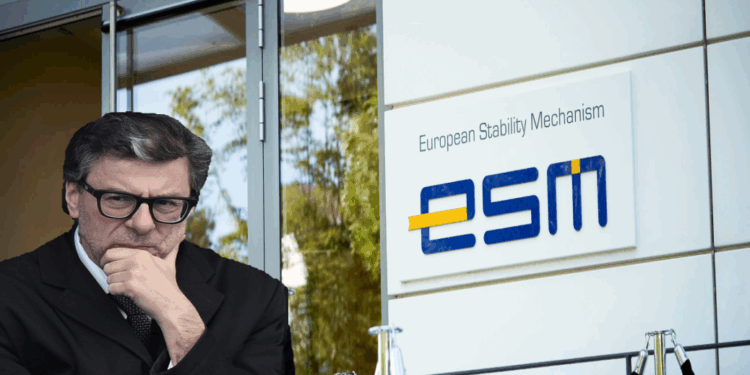Brussels – ESM, Europe is again putting pressure on Italy. Economy Minister Giancarlo Giorgetti is expected at next week’s Eurogroup meeting (May 13) to brief partners on the government’s intentions, which to date are unchanged and not even in the slightest bit shaken by constant reminders. The work schedule of the economic ministers of the EU countries with the single currency, however, includes the preparation of the annual meeting of the ESM. Therefore, the topic and confrontation come up again.
“The issue is there because it should not be,” they stress in Brussels. A reference to the failure to ratify the treaty reforming the intergovernmental organisation at the heart of the banking union project for the eurozone’s financial stability. All member states reached an agreement in January 2021 to give a new mandate to the European Stability Mechanism taking effect on January 1, 2022, at least according to the intentions of a pact also signed by Italy, which was supposed to provide a Single Resolution Fund, set up to restructure or liquidate troubled banks. This did not happen because the Meloni government, in December 2023, after nearly two years of waiting, finally killed off the pact and project.
“One cannot expect that the question of ratification will not be raised,” insists a senior European official. The ESM knot, therefore, “remains on the table, and it cannot be bypassed.” Therefore, the Treasury holder will be invited to return to the subject and address the issue. “It is a good opportunity for the Italian minister to inform us where we stand.”
However, the eurozone is at a dead end. The governing majority has no intention of backing down. Thus, Italy continues to hold the entire eurozone hostage with its veto on reforming an ESM that is seen as indispensable to further secure the economies that use the official EU currency. “The construction of the banking union is, in fact, complete; only the ESM is missing,” the senior official reiterates.
The ESM (European Stability Mechanism), takes up the legacy of the old European Financial Stability Facility, created in 2010 to prevent the default of Ireland, Portugal, and Greece. Following that euro crisis, there was a desire to create a permanent structure, precisely the ESM. With the reform that never happened due to Italy’s failure to ratify it, the body was also supposed to play the role of bank crisis resolution, with a single fund as a financial buffer, another central element of the banking union project.
Giorgetti will therefore be invited to participate in a discussion where there will be no significant news to report. On the ESM, moreover, the economy minister, who had tried to reassure partners before the rejection in the House, has already been disavowed by his own party and the entire government team.
English version by the Translation Service of Withub






